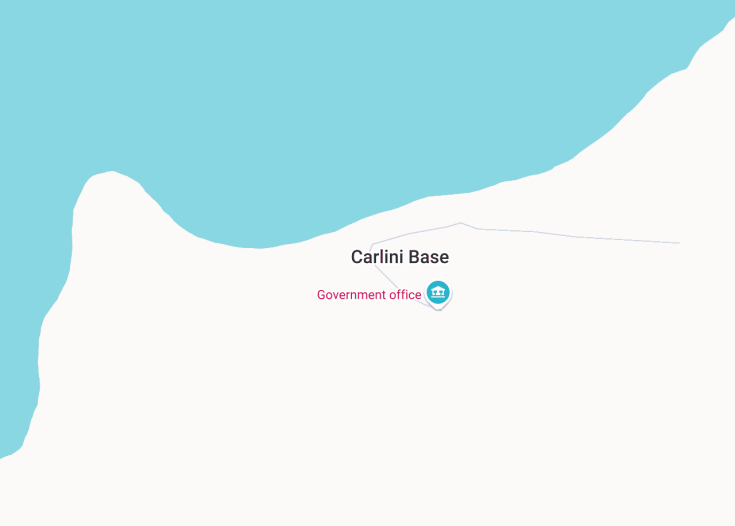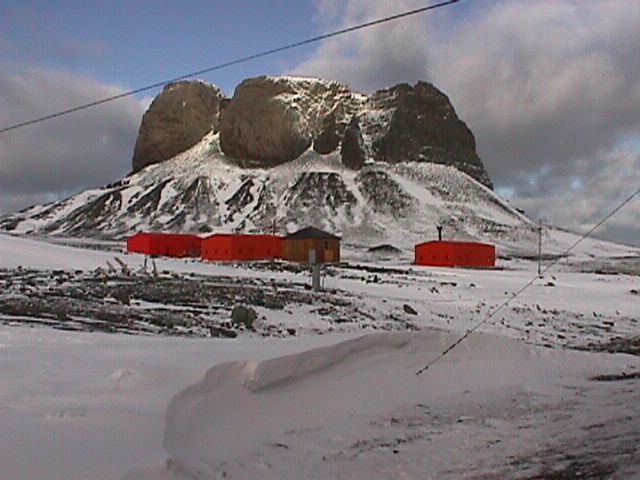Carlini Base, formerly known as Jubany Scientific Station, is a prominent Argentine research station located on King George Island, Antarctica. Operating year-round since 1953, this base focuses on biological, environmental, and oceanographic studies. It provides invaluable data contributing to global understanding of climate change and ecosystem dynamics in the polar regions. Nestled among ice-blue landscapes and thriving wildlife, Carlini offers a unique glimpse into the resilience of life in extreme conditions.
When visiting Carlini Base, ensure you are prepared for extreme cold and variable weather conditions. Packing layered thermal wear and windproof gear is crucial for a comfortable experience.
Consider scheduling your visit during the Southern Hemisphere summer, from November to March, when temperatures are highest and daylight extends for most of the day.
Top things to do & see in Carlini Base
Select the following sights and activities to discover best tickets and tours available in Carlini Base.
Carlini Base: Gateway to the Icy Wilderness
| Country | Antarctica |
| Time in Carlini Base | GMT-3 |
| Language spoken | Spanish |
| Population | 20 (data from the 2023 research staff count) |
| Currency | Argentine Peso (ARS $) |
| Airports |
|
Carlini Base, formerly known as Jubany Base, is a significant Argentine research station in Antarctica, situated on King George Island. It was founded on February 21, 1953, and has become a vital hub for scientific research focusing on marine biology, environmental sciences, and glaciology. An interesting fact about Carlini is that it hosts Argentina’s annual “The White Marathon” which conducted under extreme conditions. Scientists from around the world participate in research collaborations here, contributing to global knowledge of the Antarctic region. The base’s remote location and harsh climate conditions make it a unique spot for conducting cutting-edge research. In addition to its scientific significance, the base is also a strategic point for Argentina in the geopolitically sensitive region of Antarctica. The base has undergone various upgrades over the years to support its inhabitants sustainably living and working in one of the most extreme environments on earth.
Where is Carlini Base?
Located on Potter Peninsula of King George Island in the South Shetland Islands, Antarctica, Carlini Base rests at the edge of Maxwell Bay.
Distances:
| Route | Distance by car | Time by car |
|---|---|---|
| From Teniente R. Marsh Airport to Carlini Base | 750 mi | Cannot drive; requires a combination of flight and sea transport |
| From Presidente Eduardo Frei Montalva Base to Carlini Base | 745 mi | Cannot drive; requires a combination of flight and sea transport |
What is Carlini Base famous for?
Carlini Base is renowned for its in-depth research in polar sciences, particularly in marine ecosystems. Its contribution to climate change studies and biodiversity research is recognized globally.
History
1953 – The Foundation Era
Carlini Base, originally known as Jubany Station, was founded in 1953 on King George Island, part of Antarctica’s South Shetland Islands. Established by the Argentine Navy, it served as a prominent scientific and military outpost intended to assert Argentina’s claims and presence in the region. Initially a modest facility, it focused on meteorological studies crucial for understanding the harsh Antarctic climate.
1982 – Expansion and Renaming
In 1982, the base underwent significant renovations and expansions reflecting the growing interest in comprehensive polar research. It was during this period that the station was renamed Carlini Station in honor of Alejandro Ricardo Carlini, a notable Argentine biologist who dedicated his career to studying Antarctic ecosystems. The scope of research broadened to include marine biology, geology, and atmospheric sciences, turning the base into a hub for multidisciplinary studies.
2000s – Modern Developments
Approaching the new millennium, Carlini Base further evolved with state-of-the-art facilities, including advanced laboratories and communication systems. Collaborations with international research programs were established, allowing scientists from around the globe to work on climate change, seismic activity, and biological conservation projects. These collaborations have been vital in positioning Carlini as a center for global scientific community engagements, focusing particularly on sustainable research practices in Antarctic environments.
Visit Carlini Base
What to see and do in Carlini Base
Visiting Carlini Base in Antarctica offers a unique glimpse into both scientific exploration and the stark beauty of the most remote continent. At the base, tourists can tour the scientific facilities and learn about ongoing research projects ranging from glaciology to marine biology. The surrounding environment provides dramatic landscapes for photography, especially the ice-covered peaks and the wildlife, including colonies of penguins and seals.
- Tour of the scientific stations
- Wildlife watching
- Photography of glaciers and landscapes
Annual Science Symposiums
Carlini Base hosts annual science symposiums usually in the austral summer months from November to March. These events attract scientists, researchers, and scholars from around the world, presenting a unique opportunity for visitors to engage with the forefront of Antarctic research and discussions on climate change and conservation strategies.
Best time to visit Carlini Base
The optimal time to visit Carlini Base is during the austral summer, from November to March. During these months, temperatures are at their mildest, and the extended daylight hours provide ample opportunity for exploration and research activities.
Is Carlini Base worth visiting?
Carlini Base is undoubtedly worth visiting for those intrigued by science, nature, and extreme environments. It offers a rare opportunity to witness cutting-edge scientific research in one of the most remote parts of the world. The unique geographical and ecological aspects of Antarctica, combined with the experience of the harsh but beautiful terrain, make a visit to Carlini Base a profoundly enriching experience for adventurous souls and science enthusiasts alike.










